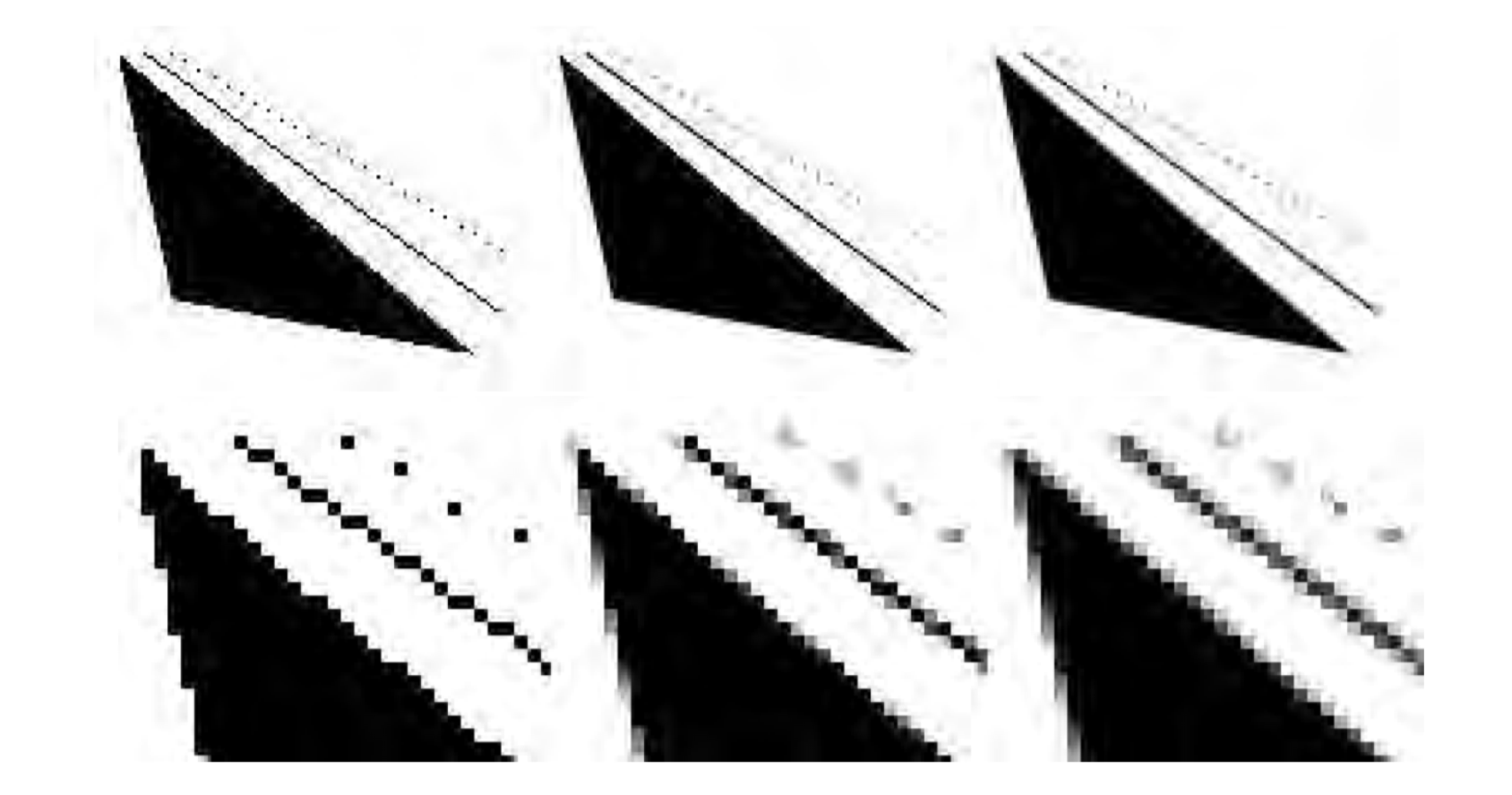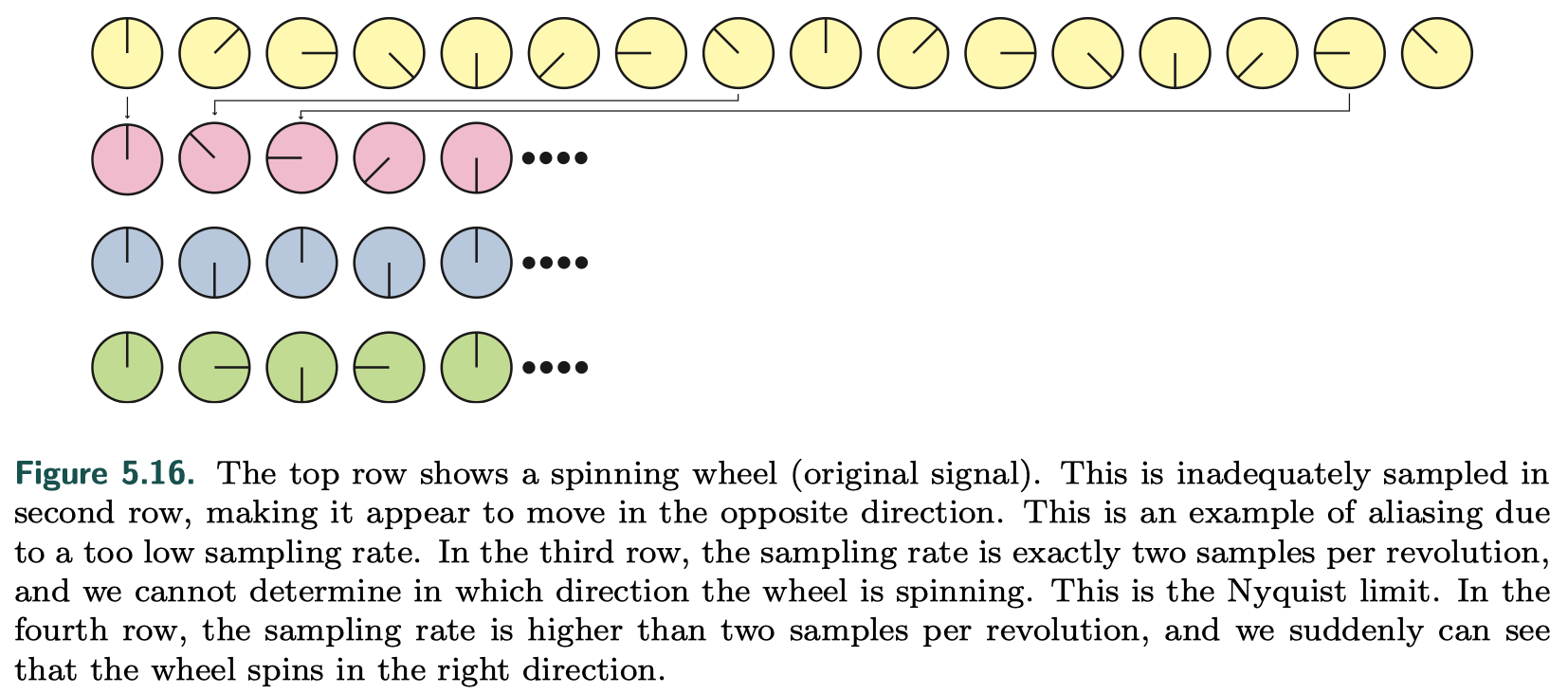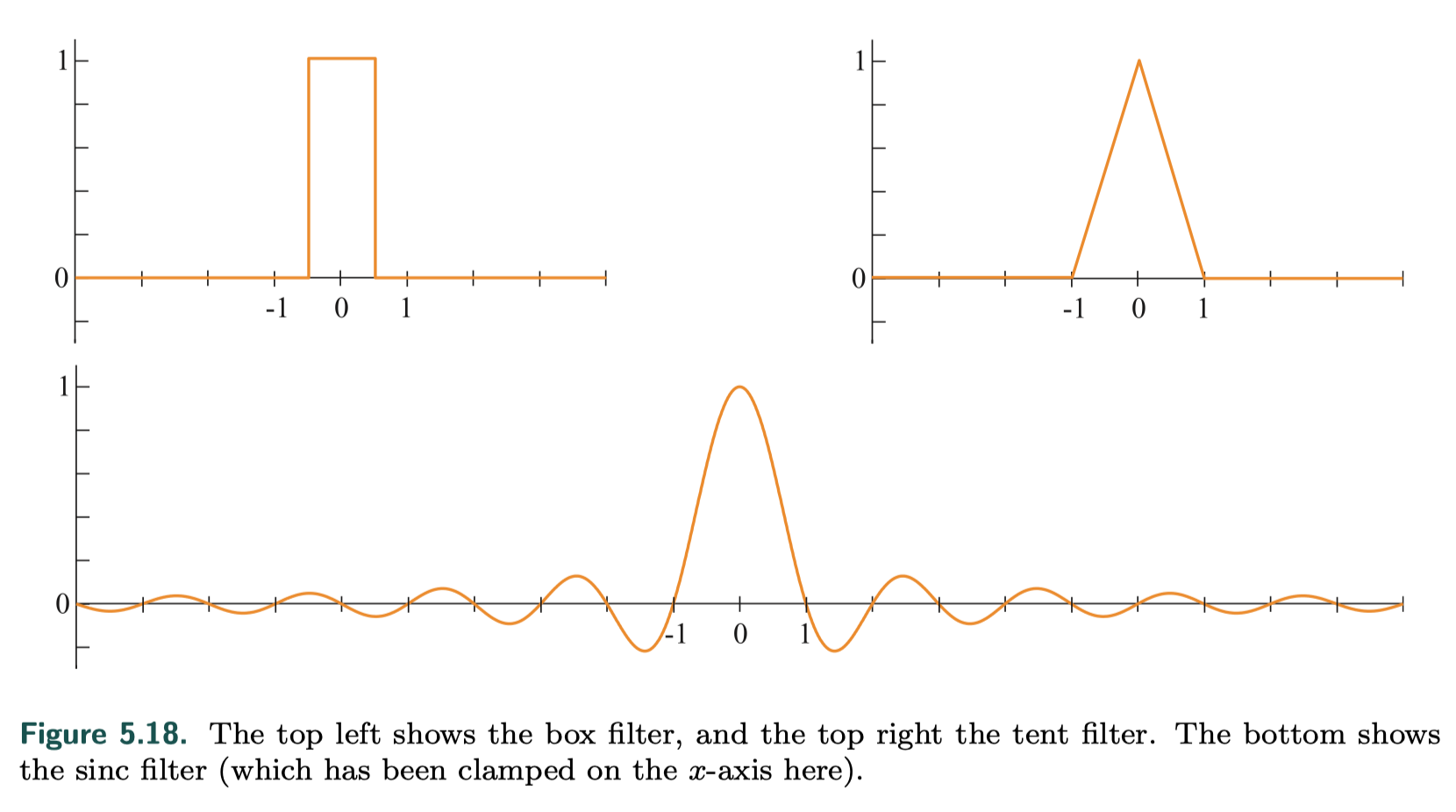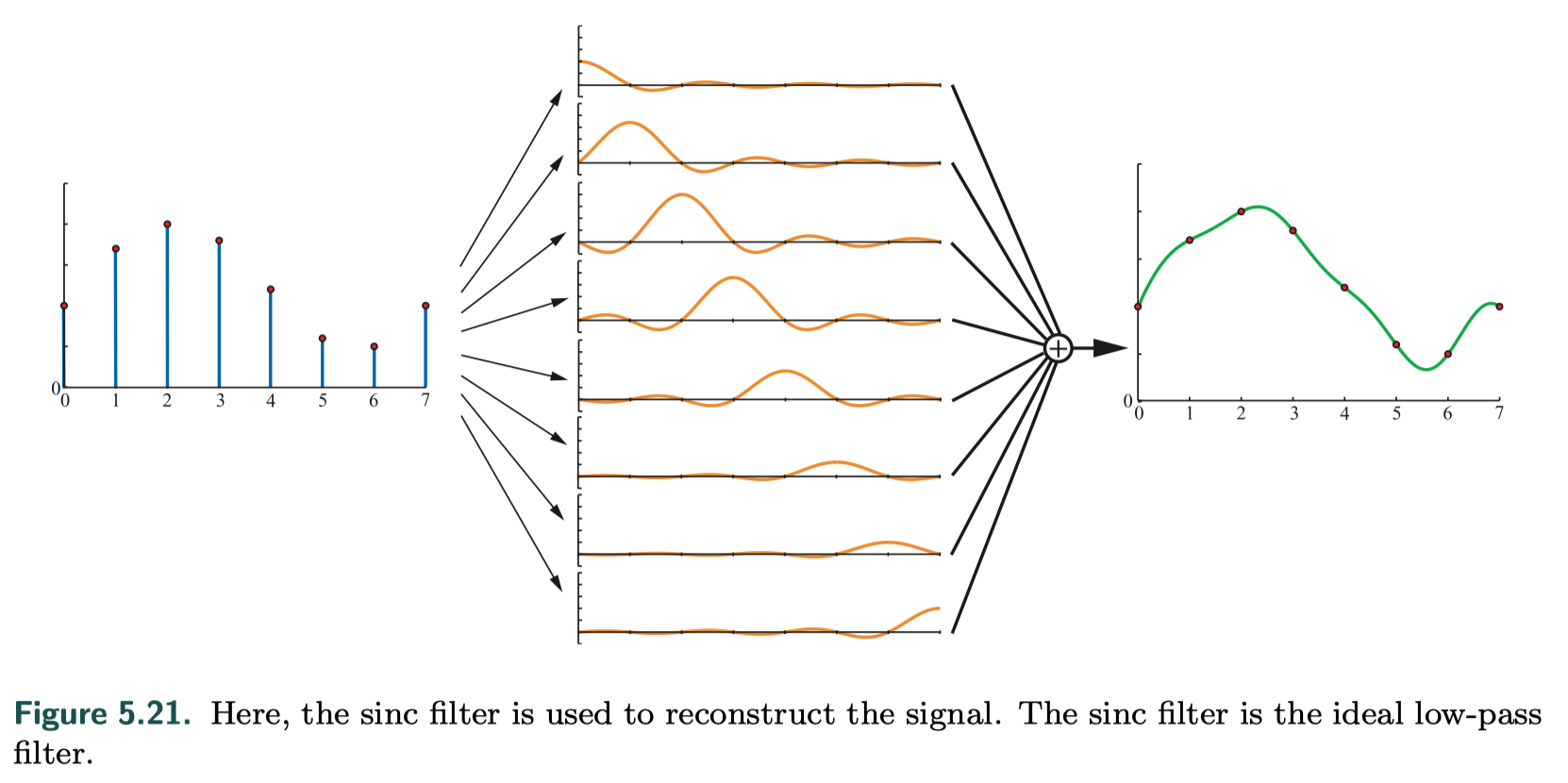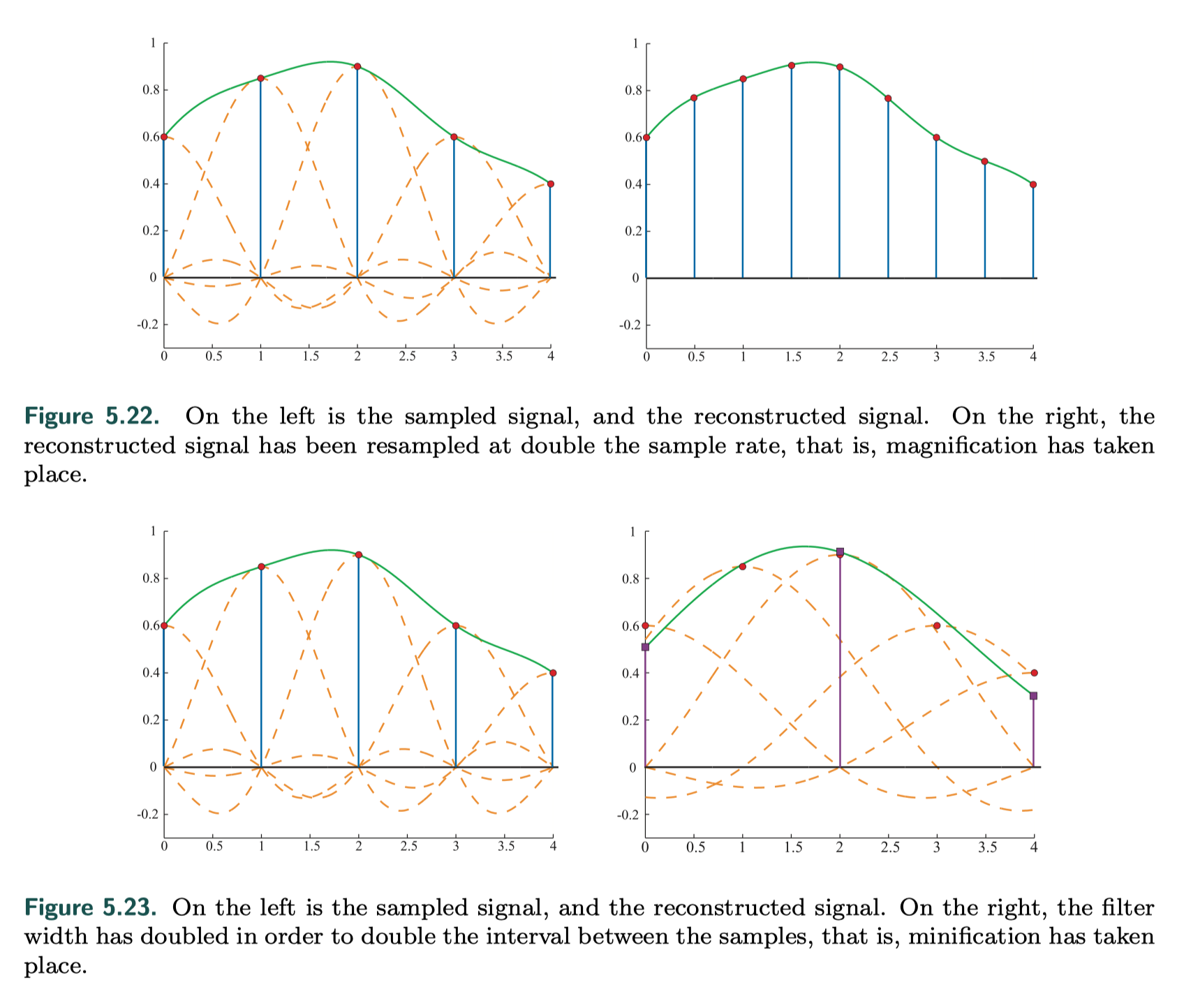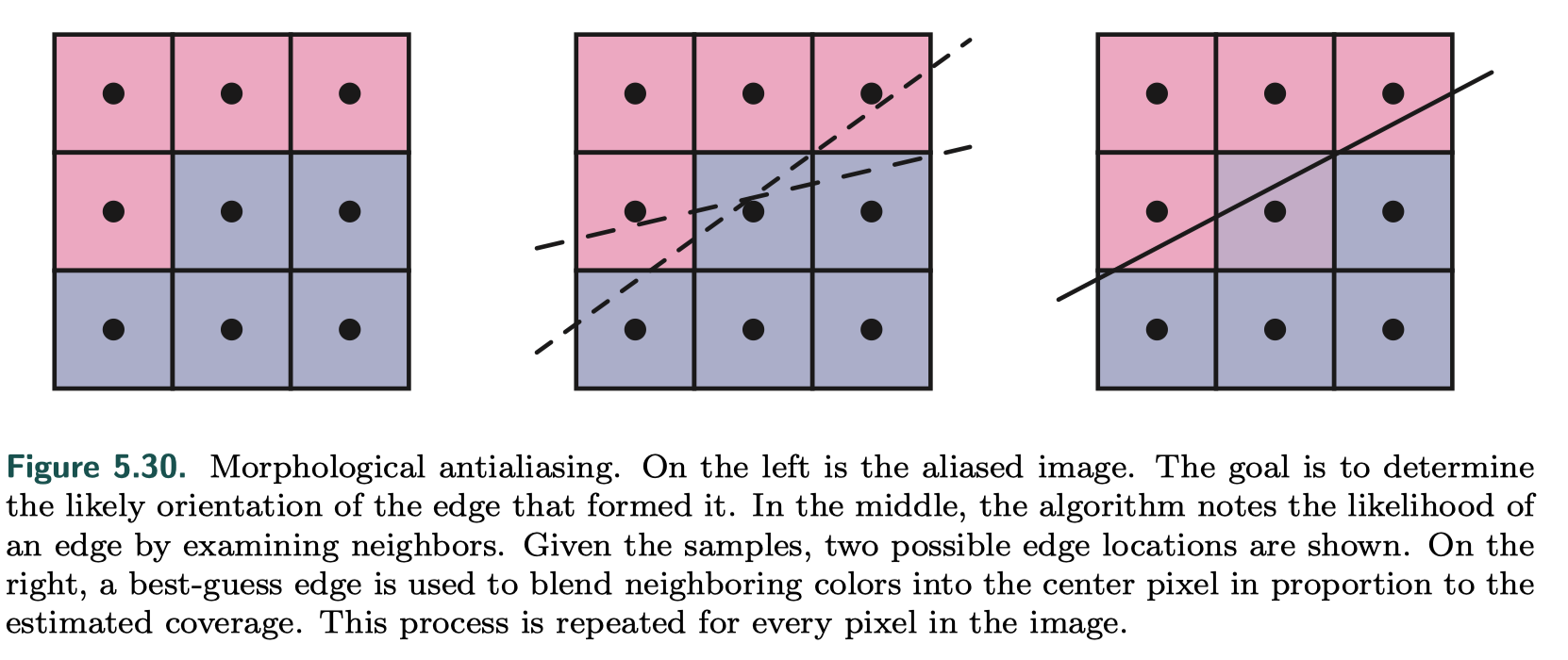Real-Time antialiasing summary
why AA
sampling and filtering theory
熟悉的奈奎斯特采样定理
要想信号可以被原样还原, the sampling frequency has to be more than twice the maximum frequency of the signal to be sampled, 否则还原出来的信号会混叠。 frequency 是 1 / T, 时域里变化周期的倒数。 但是rendering里的三维空间is normally never band-limited when rendered with point samples, 所以完全解决走样问题是几乎不可能的。
reconstruction
resampling
screen-based antialiasing
more samples
基于的宗旨基本上都是每个pixel多一些samples.
- SuperSampling AA 渲一个更大分辨率的,再下采样。
- MSAA
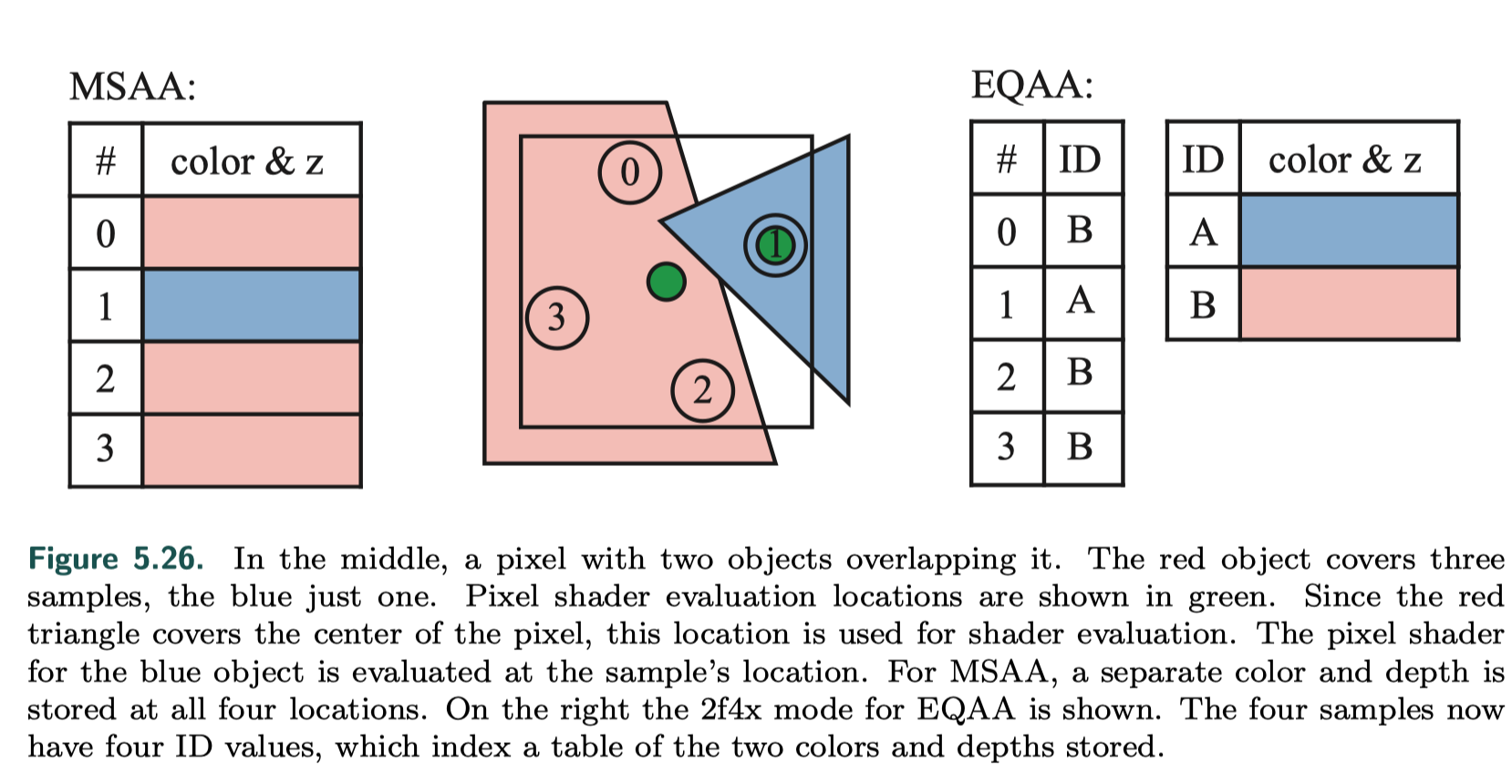 每个物体对应一个像素的pixel shader只执行一次,但是一个pixel对应多个coverage samples,各个sample各取所需。
每个物体对应一个像素的pixel shader只执行一次,但是一个pixel对应多个coverage samples,各个sample各取所需。 - TAA 每帧相机做一些jitter,利用上一帧或前几帧的渲染结果,变相的也是多了一些samples,但是对于每一帧来说sampling的开销并没有增多。
sampling patterns
研究表明,人眼对于near-horizontal and near-vertical edges更为敏感,其次是45度对角。
- RGSS(rotated grid)

- Halton sequence generates samples in space that appear random but have low discrepancy
- Quincunx
sharing samples among pixels

- FLIPQUAD

Morphological Methods
- FXAA (fast approximate antialiasing)
- 判定哪些像素是边缘 sharp changes in brightness.
- 边缘像素做blend
- SMAA (subpixel morphological antialiasing) A logical development of the FXAA algorithm. This technique not only blurs the contrast points, but also uses a kind of logic – it finds and recognizes patterns in the form of lines, curves, boundaries of objects, and blurs them in the direction of these lines.
